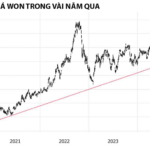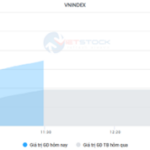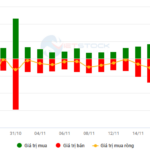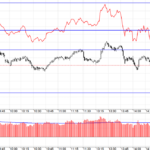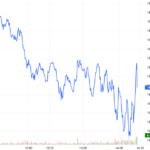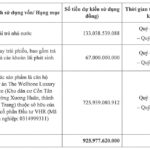As of the morning of December 4th, the South Korean won strengthened by 0.8%, rebounding from its two-year low of 1,442 won to the dollar. The won had plunged following President Yoon’s shocking declaration of martial law, according to Reuters.
Local forex traders attributed the won’s recovery to possible dollar-selling intervention by the South Korean government to stabilize the currency. They intervened aggressively as soon as the market opened to curb the won’s decline.
Meanwhile, South Korean stocks (.KS11) fell 2%, with chipmaker Samsung Electronics (005930.KS) down 1.31% and battery maker LG Energy Solution (373220.KS) dropping 2.64%.
The KOSPI index and the won have been among the worst-performing assets in Asia this year.
US-listed South Korean stocks also declined, with exchange-traded funds tracking South Korean equities, such as iShares MSCI South Korea ETF (EWY.P) and Franklin FTSE South Korea ETF (FLKR.P), falling around 1%.

South Koreans protest after the declaration of martial law.
The country’s Finance Ministry stated its readiness to inject unlimited liquidity into the financial market following President Yoon Suk Yeol’s decision to lift martial law.
“All financial markets, including foreign exchange and stock markets, will operate normally. We will inject unlimited liquidity into stocks, bonds, the short-term money market, and the foreign exchange market going forward until they are fully normalized,” the South Korean government said in a statement.
This announcement came after an emergency overnight meeting between Finance Minister Choi Sang Mok and Bank of Korea Governor Rhee Chang Yong. The central bank’s board also held an extraordinary meeting, approving relief measures for the domestic credit market.
The Bank of Korea (BOK) began special repurchase operations on December 4th to support local financial institutions and ensure smooth market operations. The bank also eased its repo collateral policy by accepting bank bonds issued by state-run companies.
According to Yonhap, the BOK stands ready to deploy 10 trillion won ($7.07 billion) into the stock market stabilization fund at any time.
Financial markets regained their footing during the December 4th trading session, with the won appreciating and stocks trimming some of their losses. However, investors remain cautious about South Korea’s long-term political stability as the country seeks to further globalize its markets.
In the early hours of December 4th, South Korea’s National Assembly unanimously voted to revoke martial law, with 190 out of 300 members present.
In the latest development, the South Korean Presidential Office announced that top aides to President Yoon Suk Yeol, including Chief of Staff Chung Jin-suk, National Security Adviser Kim Sung-han, and seven others, had offered to resign.
According to economic experts, while martial law has been lifted, the incident has created more uncertainty for the country’s political and economic landscape.
According to Reuters, Yonhap
The Twin Blows of South Korea’s Financial Market
The South Korean financial market is facing a “double whammy” of political turmoil and an already gloomy economic outlook for Asia’s fourth-largest economy.
The Market Beat: Low-End Buyers Return, but VN-Index Stays in the Red
The market ended the session on a negative note, with the VN-Index shedding 2.24 points (-0.18%) to close at 1,250.32. The HNX-Index also dipped, losing 0.02 points (-0.01%) to finish at 226.86. The market breadth was relatively balanced, with 321 decliners against 343 advancers. The large-cap VN30-Index painted a similar picture, as 19 stocks fell, 10 rose, and 1 remained unchanged, tilting the index towards the red.
Vietstock Daily: Can the Bulls Keep the Momentum Going?
The VN-Index extended its upward momentum following a strong previous session. To solidify this upward trend, trading volume needs to surpass the 20-day average. Notably, the Stochastic Oscillator has already signaled a buy in the oversold region. If the MACD indicator also flashes a similar signal, the short-term outlook will turn even more optimistic.
Stock Market Blog: Riding the T+ Wave, a Balanced Market Outlook
The afternoon saw a decent profit for bottom-fishing traders, with selling pressure remaining subdued. Volume stayed low, and most stocks exhibited narrow fluctuations. This is a positive sign, indicating a potential shift in market sentiment and a possible opportunity for investors to capitalize on undervalued stocks.
























